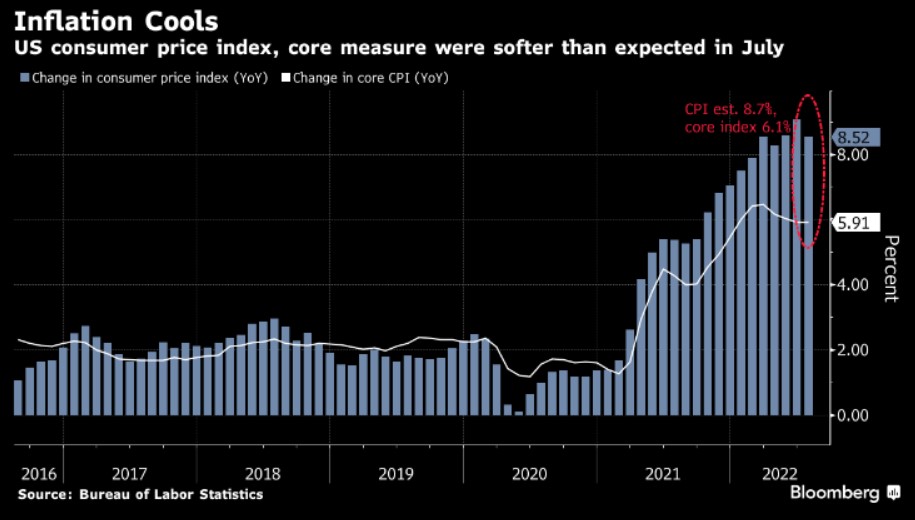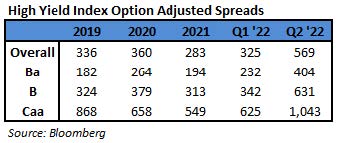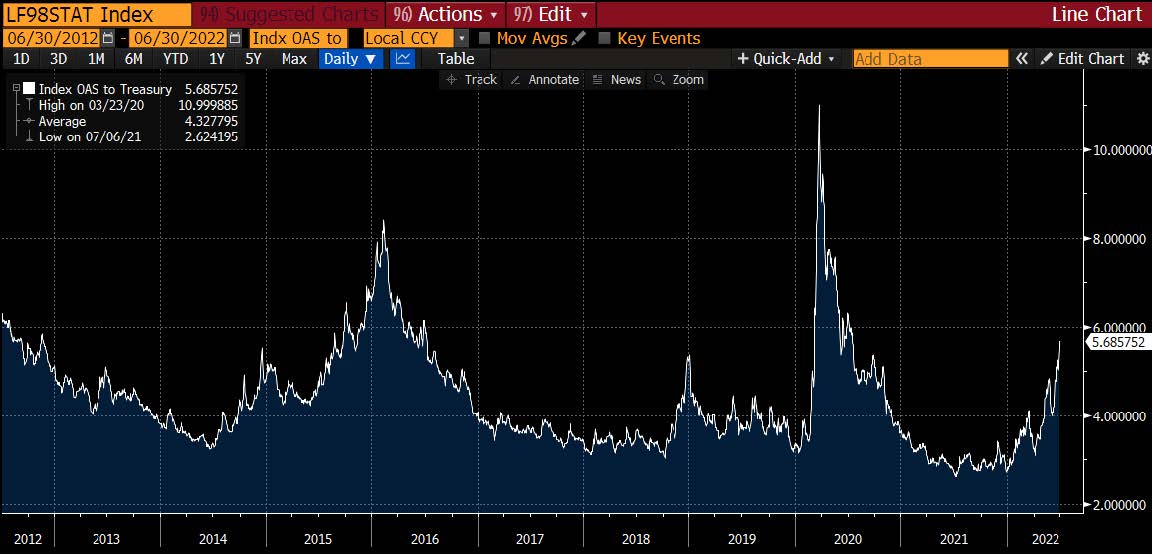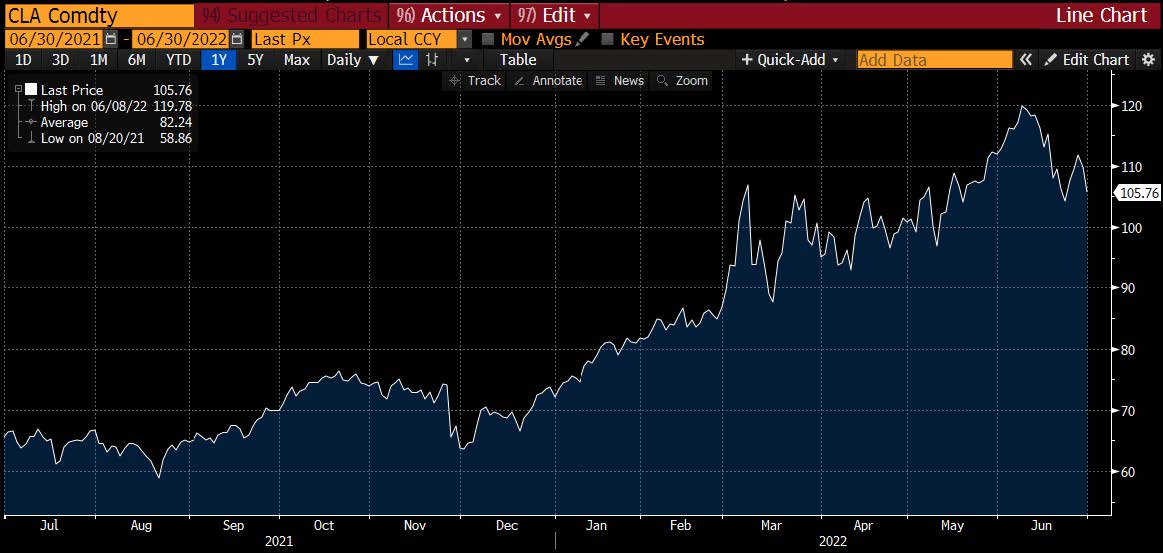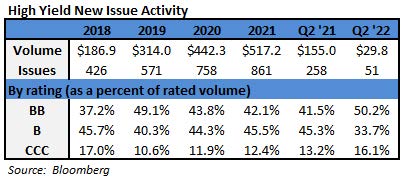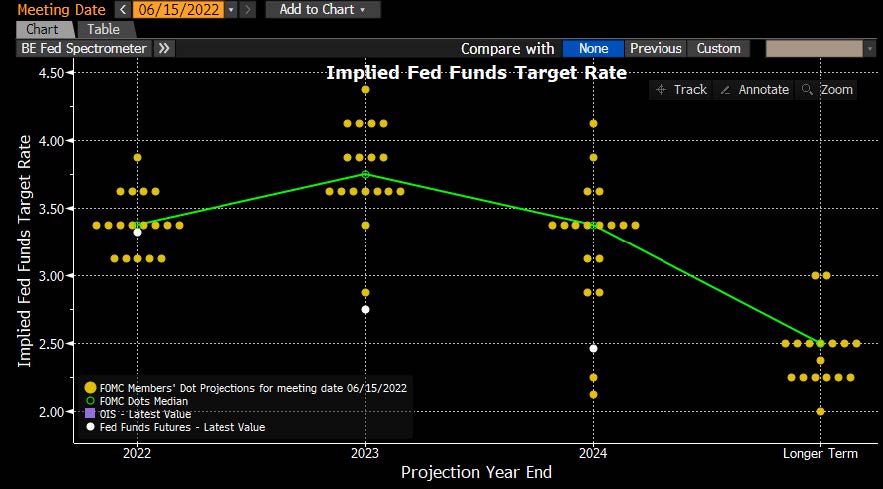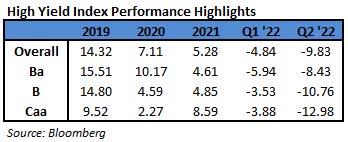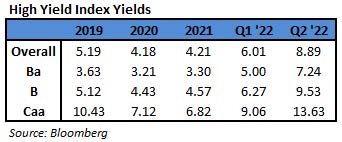Fund Flows & Issuance: According to a Wells Fargo report, flows week to date were $0.1 billion and year to date flows stand at -$54.8 billion. New issuance for the week was $3.0 billion and year to date issuance is at $82.3 billion.
(Bloomberg) High Yield Market Highlights
- U.S. junk bonds are headed for a weekly loss to end the August rebound after a higher-than-expected inflation reading on Tuesday triggered a broad market selloff. Yields surged to a two-month high of 8.61% after steadily rising for three straight sessions, pushing the week-to-date loss to 1.5%.
- The losses extended across ratings in the U.S. high yield market, with CCCs leading the pack with the worst week-to- date loss of 1.7%, after sliding for three consecutive sessions. Yields rose to a two-week high of 13.72% and spreads were approaching distressed levels.
- The primary market was suddenly jolted after the CPI data earlier in the week fueled concerns that the Federal Reserve may need to raise benchmark interest rate by even 100bps to tame inflation and trigger a recession.
- The primary market may pause after the Citrix debt sale was used to assess the risk appetite and clearing price levels for new debt amid rising rates and slowing economy. Nielsen Holdings and Tenneco are among the other leveraged buyouts in the queue to sell debt at some point.
(Bloomberg) Inflation Surprise Puts Onus on Fed to Hit Brakes Even Harder
- The U.S. economy has shown surprising resilience in the face of the fastest inflation and interest-rate hikes in a generation. That means the Federal Reserve will have to stomp even harder on demand.
- What started as a pandemic-driven supply shock has morphed into widespread inflation rooted just as much in resilient demand, underscored by unexpectedly high numbers that dashed hopes price gains were ebbing. While consumers are showing some signs of slowing, they’re still largely keeping up with persistent price pressures, powered by historic wage gains.
- All told, the Fed has a much harder task on its hands than previously thought. If Americans won’t dial back spending further, odds favor the central bank becoming that much more aggressive to take more wind out of the economy’s sails with the goal of bringing inflation down.
- “It tells you that it’s going to take a longer time, and will require higher rates — and in macro language, maybe even require more demand destruction,” as in higher unemployment and slower growth, said Torsten Slok, chief economist at Apollo Management. “It raises the probability of a recession.”
- Consumer prices advanced by more than forecast in August, defying expectations for a monthly drop due to falling gasoline prices. Shelter, food and medical care were among the largest contributors to price growth, underscoring the breadth and severity of inflation with several categories posting record increases.
- “My experience with inflation is that some of the components that were very strong in today’s report, they tend to be sticky and have a lot of inertia,” like rent, said Blerina Uruci, U.S. economist at T. Rowe Price Associates. “So I would expect those to remain pretty strong in the coming months.”
- The Atlanta Fed’s so-called sticky CPI measure rose 6.1% in August from a year ago, the biggest gain in 40 years. Meantime, the Cleveland Fed’s median CPI, which excludes categories with the largest price changes, increased by the most in data back to 1983.
- Excluding the volatile food and energy categories, the so-called core CPI climbed 0.6% from July, double the median estimate in a Bloomberg survey of economists. The core measure rose 6.3% from a year ago, the first acceleration in six months and near a four-decade high, the Labor Department’s report showed.
- “The composition is even more troubling than the aggregate reading,” Stephen Stanley, chief economist at Amherst Pierpont Securities, said in a note. “Outside of falling gasoline prices, inflation appears to be just as hot as ever, which means that the Fed still has plenty of work to do.”
- It also means that the Biden administration and fellow Democrats have plenty of work to do, as the latest data may threaten what had been growing optimism in the party that they would hold their congressional majorities in November.
- Traders are now fully expecting the central bank to raise interest rates by another 75 basis points when policy makers meet next week, which would be the third-straight hike of that size. They’re also upping bets that officials will go bigger at their November gathering and see the tightening cycle peaking around 4.3% early next year — more than a quarter-point higher than what was projected before the CPI report.
- Chair Jerome Powell has communicated a stronger resolve to stamp out inflation since the Fed’s summit in Jackson Hole last month, signaling that the central bank is likely to keep raising interest rates and leave them elevated for a while. He’s stuck to that hawkish view and several of his colleagues also support hiking rates to a point that more clearly restricts demand.
This information is intended solely to report on investment strategies identified by Cincinnati Asset Management. Opinions and estimates offered constitute our judgment and are subject to change without notice, as are statements of financial market trends, which are based on current market conditions. This material is not intended as an offer or solicitation to buy, hold or sell any financial instrument. Fixed income securities may be sensitive to prevailing interest rates. When rates rise the value generally declines. Past performance is not a guarantee of future results.
